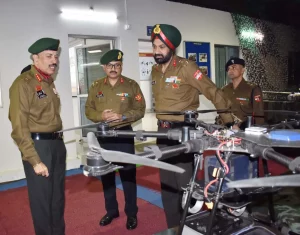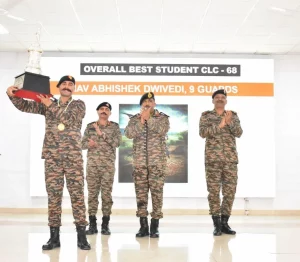In the pursuit of success in the AFCAT (Air Force Common Admission Test) exam in 2024, mastering the Reasoning section is paramount. Within the diverse tapestry of Reasoning, Embedded Figures present a unique challenge, demanding a nuanced understanding of visual patterns. This article delves into the intricacies of AFCAT 1 2024 Exam Reasoning – Embedded Figures, shedding light on crucial concepts, problem-solving strategies, and the art of deciphering concealed designs.
Understanding Embedded Figures
Essential Concepts of Embedded Figures
1. Concealed Designs: Understanding how one figure is concealed within another, forming a complex visual design.
2. Spatial Relationships: Discerning the spatial relationships between figures and uncovering the hidden configurations.
3. Symmetry Dynamics: Understanding how symmetry and asymmetry play a role in concealing or revealing figures.
4. Logical Connectivity: Applying logical connectivity to trace the contours of concealed designs and unveil the embedded figure.
Solving Embedded Figures
In preparation for the AFCAT 1 2024 Exam, navigating Embedded Figures involves the application of fundamental concepts.
Deciphering Concealed Designs
Understanding how one figure is concealed within another requires a keen eye for detail. Candidates must discern the contours, lines, or shapes that form the concealed design.
Spatial Relationships in Concealed Configurations
Discerning the spatial relationships between figures is pivotal. Candidates must unveil the hidden configurations by analyzing how one figure fits within another.
Navigating Symmetry and Asymmetry
The dynamics of symmetry and asymmetry play a crucial role in Embedded Figures. Candidates must decipher how these principles contribute to concealing or revealing figures within a given arrangement.
Applying Logical Connectivity for Unveiling
Logical connectivity is the key to unveiling concealed designs. By tracing the contours and connections logically, candidates can reveal the embedded figure within a complex arrangement.
Strategies for Effective Embedded Figures Problem Solving
1. Developing Visual Acuity
Cultivate visual acuity to discern details within complex arrangements. A heightened sense of observation aids in deciphering concealed designs.
2. Analyzing Spatial Configurations
Instead of viewing figures in isolation, analyze them in terms of spatial configurations. This analytical approach aids in predicting how one figure is embedded within another.
3. Grasping Symmetry Principles
Understand the principles of symmetry and asymmetry within figure arrangements. A solid grasp of these principles contributes to deciphering how figures are concealed or revealed.
4. Mastering Logical Connectivity
Logical connectivity serves as the guiding thread in Embedded Figures. Mastering the art of tracing logical connections allows candidates to navigate through complex arrangements with precision.
Visual Decoding of Concealed Designs
Unraveling Hidden Configurations
Embedded Figures often conceal intricate designs within seemingly complex arrangements. Candidates must hone their ability to unravel these hidden configurations and discern the logic behind them.
Predicting Concealed Figures
The arrangement of figures contributes to the concealed design. Successful candidates can predict how one figure is embedded within another, anticipating the contours and connections.
The Symmetry-Aware Decoder
Adept decoders of Embedded Figures are inherently symmetry-aware. They can identify symmetrical relationships between figures and anticipate how these relationships contribute to the concealed design.
Logical Connectivity as the Decoding Tool
Logical connectivity serves as the decoding tool that unravels concealed designs. Candidates who grasp the logical relationships between figures can navigate through the complexity with precision.
Conclusion
Mastering Embedded Figures in the AFCAT 1 2024 Exam Reasoning section is a journey of visual acuity, pattern recognition, and logical connectivity. This article has explored essential concepts, problem-solving strategies, and the holistic approach necessary for effective navigation of Embedded Figures. As candidates delve into their preparation, a comprehensive understanding of concealed designs will undoubtedly contribute to their success in tackling this intricate facet of the Reasoning section. Best of luck to all aspirants as they navigate the challenges of the AFCAT 1 2024 Exam with confidence and a keen eye for concealed configurations.



















